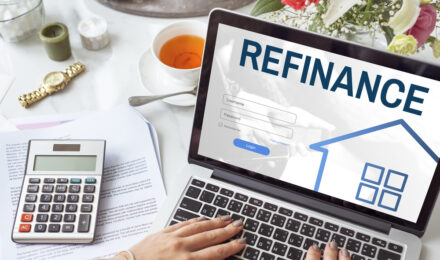The “cost of living” refers to the amount of money needed to cover essential daily expenses, such as food, housing, transportation, taxes, healthcare, and other necessities in a specific area. This measure plays a key role in determining the standard of living for households within a particular region. It influences government policies, personal finances, corporate decisions, and even migration trends. Cost of living varies widely across countries, states, and cities, shaped by factors like job opportunities, local economic conditions, and government regulations. Understanding cost of living is crucial for managing finances effectively and is a topic of broad societal interest. Knowing its factors and how to manage your own living costs can greatly improve your quality of life.
Key Factors Affecting Cost of Living
Housing: Housing typically represents the largest portion of living expenses. This category includes mortgage or rent payments, maintenance, and property taxes. High demand and limited supply can drive up costs for both renters and homeowners.
Food: Food prices can be a significant burden, whether from groceries or dining out. Urban areas often have higher grocery costs due to labor and logistical expenses, while rural areas might have limited choices for food shopping or dining.
Transportation: Transportation is a necessity for most, with vehicle owners paying for monthly payments, insurance, maintenance, and fuel or electricity. Those without cars still face costs for public transportation or rideshares, as much of the country remains car-dependent.
Healthcare: Healthcare expenses have risen consistently, encompassing insurance premiums, prescription costs, and co-pays. While medical advancements improve healthcare quality, the associated research and development drive costs upward.
Managing Your Personal Cost of Living
Effectively managing your cost of living is essential for both financial stability and achieving long-term goals. As expenses grow over time, a thoughtful strategy is crucial. Here are practical steps to help manage your household’s cost of living.
1. Create a Detailed Budget
Start by tracking your income and expenses to develop a structured budget that gives you a clear view of your cash flow. Include fixed costs like rent or mortgage, insurance, utilities, and debt payments, as well as variable costs like transportation, groceries, entertainment, and dining out. Spreadsheets and budgeting apps can simplify this process. By setting realistic limits on non-essential expenses, you can maintain spending boundaries and save for future needs.
2. Prioritize Essential Spending
To manage living costs effectively, focus on essentials like food, housing, transportation, and healthcare. Discretionary income, or what’s left after covering these basics, can be spent on hobbies, entertainment, and vacations. If essential expenses consume too much of your budget, consider ways to reduce them. For instance, sharing housing with a roommate or shopping in bulk can help lower living costs.
3. Cut Unnecessary Expenses
Regularly reviewing your spending can reveal habits that aren’t adding significant value to your life. Impulse purchases, memberships, and subscriptions can quickly drain your budget without contributing much to your well-being. Small adjustments, like reducing these non-essentials, can lead to substantial savings over time.
4. Manage Debt Wisely
While debt allows you to finance large purchases or cover emergencies, interest payments can slow financial progress. Whenever possible, avoid unnecessary debt, seek lower interest rates, and consolidate loans to simplify payments.
5. Save and Invest
Having a financial safety net is essential. Start by setting aside a percentage of your income each month to build an emergency fund. Once you’ve saved enough to cover several months’ expenses, explore retirement accounts, stocks, bonds, and other investment options to grow your wealth.
6. Monitor Inflation and Adjust Accordingly
Inflation affects the cost of living by eroding purchasing power. Tracking inflation can help you adjust your budget as prices increase. Reducing discretionary spending can offset rising essential costs, and finding ways to increase income through promotions, side jobs, or career changes can help maintain your standard of living.
Why Understanding Cost of Living Matters
Knowing the cost of living is valuable not only for individuals and households but also for governments and businesses. On a personal level, it helps with budgeting, choosing where to live, and setting salary expectations. Companies use cost-of-living data to establish salaries, decide office locations, and determine compensation packages. Governments rely on this information for setting economic policies, minimum wages, and benefit programs. This understanding is also crucial for planning retirement and investments, leading to better-informed decisions and, ultimately, a higher quality of life.
The “cost of living” refers to the amount of money needed to cover essential daily expenses, such as food, housing, transportation, taxes, healthcare, and other necessities in a specific area. This measure plays a key role in determining the standard of living for households within a particular region. It influences government policies, personal finances, corporate decisions, and even migration trends. Cost of living varies widely across countries, states, and cities, shaped by factors like job opportunities, local economic conditions, and government regulations. Understanding cost of living is crucial for managing finances effectively and is a topic of broad societal interest. Knowing its factors and how to manage your own living costs can greatly improve your quality of life.
Key Factors Affecting Cost of Living
Housing: Housing typically represents the largest portion of living expenses. This category includes mortgage or rent payments, maintenance, and property taxes. High demand and limited supply can drive up costs for both renters and homeowners.
Food: Food prices can be a significant burden, whether from groceries or dining out. Urban areas often have higher grocery costs due to labor and logistical expenses, while rural areas might have limited choices for food shopping or dining.
Transportation: Transportation is a necessity for most, with vehicle owners paying for monthly payments, insurance, maintenance, and fuel or electricity. Those without cars still face costs for public transportation or rideshares, as much of the country remains car-dependent.
Healthcare: Healthcare expenses have risen consistently, encompassing insurance premiums, prescription costs, and co-pays. While medical advancements improve healthcare quality, the associated research and development drive costs upward.
Managing Your Personal Cost of Living
Effectively managing your cost of living is essential for both financial stability and achieving long-term goals. As expenses grow over time, a thoughtful strategy is crucial. Here are practical steps to help manage your household’s cost of living.
1. Create a Detailed Budget
Start by tracking your income and expenses to develop a structured budget that gives you a clear view of your cash flow. Include fixed costs like rent or mortgage, insurance, utilities, and debt payments, as well as variable costs like transportation, groceries, entertainment, and dining out. Spreadsheets and budgeting apps can simplify this process. By setting realistic limits on non-essential expenses, you can maintain spending boundaries and save for future needs.
2. Prioritize Essential Spending
To manage living costs effectively, focus on essentials like food, housing, transportation, and healthcare. Discretionary income, or what’s left after covering these basics, can be spent on hobbies, entertainment, and vacations. If essential expenses consume too much of your budget, consider ways to reduce them. For instance, sharing housing with a roommate or shopping in bulk can help lower living costs.
3. Cut Unnecessary Expenses
Regularly reviewing your spending can reveal habits that aren’t adding significant value to your life. Impulse purchases, memberships, and subscriptions can quickly drain your budget without contributing much to your well-being. Small adjustments, like reducing these non-essentials, can lead to substantial savings over time.
4. Manage Debt Wisely
While debt allows you to finance large purchases or cover emergencies, interest payments can slow financial progress. Whenever possible, avoid unnecessary debt, seek lower interest rates, and consolidate loans to simplify payments.
5. Save and Invest
Having a financial safety net is essential. Start by setting aside a percentage of your income each month to build an emergency fund. Once you’ve saved enough to cover several months’ expenses, explore retirement accounts, stocks, bonds, and other investment options to grow your wealth.
6. Monitor Inflation and Adjust Accordingly
Inflation affects the cost of living by eroding purchasing power. Tracking inflation can help you adjust your budget as prices increase. Reducing discretionary spending can offset rising essential costs, and finding ways to increase income through promotions, side jobs, or career changes can help maintain your standard of living.
Why Understanding Cost of Living Matters
Knowing the cost of living is valuable not only for individuals and households but also for governments and businesses. On a personal level, it helps with budgeting, choosing where to live, and setting salary expectations. Companies use cost-of-living data to establish salaries, decide office locations, and determine compensation packages. Governments rely on this information for setting economic policies, minimum wages, and benefit programs. This understanding is also crucial for planning retirement and investments, leading to better-informed decisions and, ultimately, a higher quality of life.




